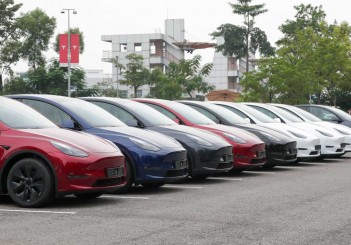KUALA LUMPUR: Most taxi hotspots in the Klang Valley are the main areas where ride-hailing drivers are supposed to operate in order to be eligible for incentives.
Despite being targeted by vigilante taxi groups, drivers from Uber and GrabCar have no choice but to ply these hotspots at all times.
In order to protect themselves from harassment, drivers have come up with creative ways to trick cabbies into thinking they are ordinary folk.
StarMetro spoke to both Uber and GrabCar drivers on measures they take to avoid being detected as drivers for the ride hailing companies.
1. Avoid main pick-up points in core areas
Avoid taxi stands at all cost.
“I will ask the passenger to meet me a few hundred metres away from the main entrances and lobby of buildings where there is a taxi stand in place,’’ said Raj. "Places like Mid Valley, Pavilion. Suria KLCC, and even hotels are good examples.’’
The GrabCar driver explained that not all passengers are understanding while some still prefer that drivers pick them up at their doorstep and they simply hope and pray that nothing untoward happens.
2. Ask passenger to sit in front
Of course, the most logical and common way to avoid harassment from cabbies is to invite passengers to sit in front.
Most people usually have no problem doing this.
However, it does not guarantee that you will not be harassed as proven on previous episodes.
3. Use baby seat prop
However, not everyone will sit in front.
For those that refuse, the drivers cannot do much.
But some have come up with an ingenious way to get away with it.
The baby seat prop!
“It works all the time,’’ said Uber driver Kevin.
“I am not really a chatty person.
“I mean, I do not like to say things just to be in a talking mode,’’ he explained.
“But Uber insists that we chat with passengers. It’s good for rating they say.
“So the baby seat trick actually works well for me,’’ Kevin added.
Kevin elaborated with the baby seat taking up the front passenger seat, passengers are forced to sit at the back.
“So taxi drivers will not suspect that I am an Uber driver and I don’t have to be so chatty. It’s a win win situation for me,’’ Kevin added.
4. Observe the passengers rating
Drivers should not have to deal with rude and aggressive passengers.
Uber drivers are allowed to rate passengers for individual trips.
Uber drivers can gauge the type of passengers they pick up by observing the passenger’s rating.
The rating will only pop up once the driver is assigned to a passenger.
“Ratings are scored on a one-to-five-star scale, and if a I get a passenger with a rating of four and lower, I will be a little cautious with this person,’’ said Ahmad, an Uber driver.
For Simon who drives a GrabCar, he said that with Grabcar, you could tell the number of rides a passenger has taken to date.
“The higher the number of rides a passenger has means you can safely assume that it is a genuine customer and not a undercover taxi or SPAD officer,’’ he said.
5. Install dashcams and CCTVs
While GrabCars in Malaysia has introduced the in-car CCTV cameras as a pilot project, for now, only 100 cars for female drivers will have this added protection.
However, some Uber and GrabCar drivers have installed a dash cam in their car for safety reasons.
6. Use Truecaller app
Some drivers have resorted to using an app called Truecaller to identify passengers who have booked for their service.
The app enables one to identify the person calling before the driver picks up the call.
So in other words, drivers who have downloaded the app, are able to see the true identity of each incoming call before picking up the phone.
Uber driver Ridzuan said that with the app, he is able to identify the person or company calling him.
This include landlines, mobile, or pre-paid numbers, even if the number is not in his contact list.
“I have heard that officers from SPAD are going undercover posing as passengers to nab drives, so this app comes in handy.
“It’s not foolproof, but it has worked for me,’’ Ridzuan added.
Uber has the Uber Incident Response Team, which is available 24 hours a day, seven days a week to respond immediately to any reported incidents or accidents globally.
Uber also has a centre in Kuala Lumpur and Partner Support Centres in all the cities it operate in. providing drivers with technical support to payments in person or even by email.
For GrabCar, the app has a police button, when pressed, connects the driver directly to the nearest police station where their vehicle is located.
They also have an emergency hotline which they can call in case of an emergency.










